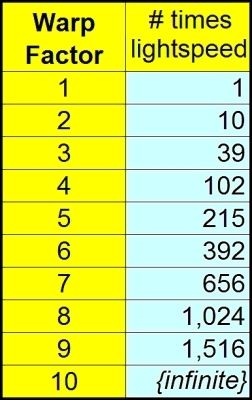I'm happy with arguing that different transporter machines produce different visual effect. Alien machines definitely produce alien ones, after all. But warp is more or less universal regardless of species or level of tech; there may be slight coloration nuances (the violet tones of the Jem'Hadar warp as seen from "inside"), but the starstreaks are the same for everybody.
What probably makes a big difference is where the "camera" is placed. Is it inside the warp field? Riding along just outside it? Inside its own, separate warp field? Also, how fast is the ship going exactly?
Nuances are again okay: some engines may burp off excess plasma to create the ST:NEM smoke effect, some may leave colorful contrails, etc.
Timo Saloniemi
What probably makes a big difference is where the "camera" is placed. Is it inside the warp field? Riding along just outside it? Inside its own, separate warp field? Also, how fast is the ship going exactly?
Nuances are again okay: some engines may burp off excess plasma to create the ST:NEM smoke effect, some may leave colorful contrails, etc.
Timo Saloniemi



